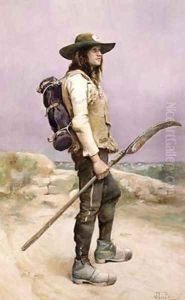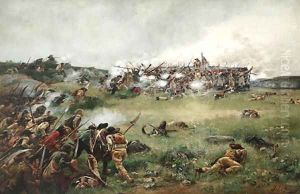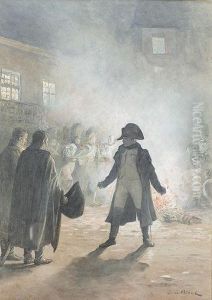Julien Le Blant Paintings
Julien Le Blant was a French painter born on October 29, 1851, in Épernon, Eure-et-Loir, France. He was known for his historical and genre paintings, often focusing on the events and stories from the Franco-Prussian War and the Vendée during the French Revolution. Le Blant's works are characterized by their detailed narrative quality and his ability to capture the emotional intensity of the subjects he portrayed.
Le Blant studied art at the École des Beaux-Arts under Alexandre Cabanel, a prominent academic painter of the time. His education at this prestigious institution helped him develop a solid foundation in the techniques and standards of academic painting, which was evident in his meticulously rendered works. Le Blant was very much a product of his time, and his style was influenced by the prevailing artistic movements of the late 19th century, including Realism and Romanticism.
Throughout his career, Julien Le Blant exhibited his works at the Paris Salon, the annual art exhibition of the Académie des Beaux-Arts in Paris. He received recognition and accolades for his depictions of historical scenes, particularly those involving the Vendée uprising, a counter-revolution in the Vendée region against the Republican government during the French Revolution. His paintings often portrayed the struggles and the tragic episodes of this period, reflecting his commitment to recording the human aspects of history.
Le Blant's dedication to historical accuracy and his empathetic portrayal of his subjects earned him a respected place among his contemporaries. His works were appreciated not only for their artistic merit but also for their contribution to the collective memory of French history. In 1890, he was awarded the Legion of Honor, France's highest order of merit for military and civil merits, which was a testament to his stature as an artist and his impact on French culture.
Julien Le Blant continued to paint throughout his life, leaving behind a significant body of work that offers insight into the historical events and societal concerns of his era. He passed away on April 18, 1936, in Paris. Today, his paintings can be found in various museums and collections, where they continue to be studied and appreciated for their historical value and artistic quality.


